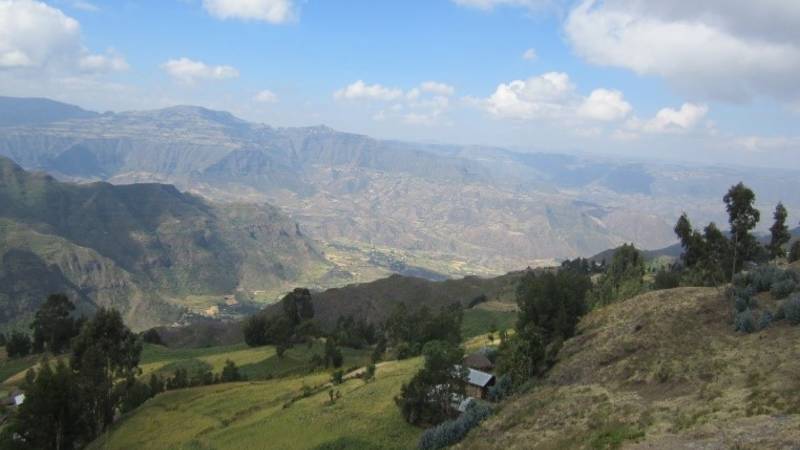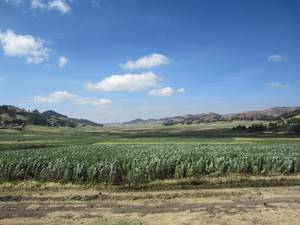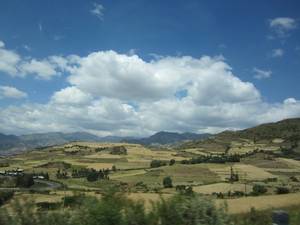Revolving the Seeds and Diffusing the Beans: Reviving Faba bean Cultivation in Ethiopian Highlands

Faba bean is a major source of protein ensuring nutritional security and income for farming families, especially in the highlands, while enriching the soil by fixing atmospheric nitrogen improving soil fertility and health and reducing the production costs to farmers. It is a crop that makes significant contribution to an integrated management of soil fertility and sustainable farming systems.
Meanwhile malt barley is an important food security crop as well as cash crop for the farmers in the highlands where there is an opportunity for market linkages with malt factories and breweries. Development partners and stakeholders working on agriculture can help farmers benefit from these multidimensional crops and maximize their potential contribution to the regional and national economy, through provision of seeds, other inputs and other services such as training, credits, market linkages, etc.
ICARDA in collaboration with NARS partners and development practitioners have implemented projects supported by the Austrian Development Agency (Austria) and USAID (US) from 2014 to 2018. The former addressed the critical constraints in yield gaps while the latter focused on scaling of improved technologies of faba bean, chickpea and malt barley. The Sirinka Agricultural Research Center (SrARC) has been promoting an integrated crop management packages to manage these major constraints in collaboration with ICARDA in the North and South Wollo Zones. Moreover, since 2015/16 crop seasons SrARC and ICARDA have been undertaking scaling work in collaboration with the bureaus (offices) of agriculture at zonal (district) levels and kebeles (lowest administrative unit).
Wereilu district
The preliminary scaling work of faba bean variety Walki (from ICARDA) was initiated on 8 hectares at Kabe kebele in Wereilu district during 2015/16. The faba bean cultivation has now reached full scale expansion and has been implemented on a total land area of 1200 hectares reaching an estimated 10,000 households (or 60,000 household members) in 2018/19 crop season. Farmers would expect a yield of up to 4 tons ha-1 with an estimated total production of 4,800 tons. If only 2,400 tons (50 per cent) is used as seed for scaling it is enough to plant 12,000 ha in the coming year and it may reach about 100,000 households (500,000 household members). The district is already assisting in scaling the technology to the neighboring districts as a source of technology and experience sharing. The spillover effect will bring the faba bean production to the great heights over the coming years.
Legambo district
In Legambo district, the adoption and diffusion of faba bean variety Walki along with malt barley variety IBON 173 (from ICARDA) is spreading as well. The district is exemplary in promoting the improved technologies where farmers’ fields are clustered, and row planted for both seed and grain production. In 2018/19 crop season, about 911 ha of faba bean was planted by 2487 (265 female) farmers who could easily harvest 2,278 tons of seed/grain (@ 2.5 tons ha-1). If only 1,139 tons (50 percent) is used for scaling, it may plant 5,694 ha in the coming year and may also reach about 47,448 households (237,240 household members). Similarly, about 408 ha of malt barley was planted by 749 farmers (83 female) which can produce 1,020 tons of seed/grain and able to cover 10,200 ha reaching about 44,348 farm households (221,740 household members). There is a great potential for malt barley production and there is an opportunity for linkages with malt factories and breweries operating in the region. Farmers in Legambo district become major source of faba bean seed for neighboring districts such as Kellela, Sayint, Tenta and Wegdi districts.
Kutaber district
Kutaber, a very rugged district in South Wollo Zone, is one of the districts where farmers were robbed of their livelihoods because of the orobanche infestation. Children below the age of 20 years have never seen a standing faba bean crop in their entire life according to Seid Abebe, a nodal farmer who single handedly played a key role in spreading a newly released orbanche tolerant faba bean variety Hashenge. This originated from ICARDA and was directly released by Alemata ARC of Tigary Agricultural Research Institute in 2015. From a single plot and single farmer, who started on the inception of the project, today the variety is spreading like a wild fire jumping the gorgeous but distant valleys. In some villages you see more faba bean fields than other cereal crops such as wheat or teff. The variety was also distributed to the adjoining districts of Ambasel, Dessie Zuria, Mekdella, and Tenta through informal exchange (direct sell of seed), Bureau (Office) of Agriculture, Wollo University and NGOs working on scaling activities with major spillover effects.
Seed system innovations
Small seed pack distribution coupled with revolving seed scheme played a significant role in this endeavor. Farmers were mobilized, trained and provided with source seed of improved varieties for seed production and marketing with technical backstopping from the agricultural research centers and district offices of agriculture. Farmers return the seed in kind for further scaling of the technology by district agricultural office while they are free to save or sell part of the seed directly to other farmers, public seed enterprises or development practitioners operating in the locality after the seed is inspected and certified by the regional seed quality control agency.
For example, from 2015 to 2018, farmers in Legambo and Wereilu districts produced about 1,590 tons of malt barley seed, of which in 2017 alone, about 80 tons was sold to Lay-Gaynt district in South Gonder Zone, 100 tons sold to Meket and Wadla districts in North Wollo Zone, and 100 tons sold to Gonder malt factory.
Organizing these farmers into seed producer cooperatives and linking them with seed unions is the next step which has already shown very good results elsewhere in the country for similar or other crops. This ensures the continuity and sustainability and creates sense of independence and self-reliance by farmers.
Further references:
- 16/12/2019 The economic advantages of legume-based rotations over cereal mono-cropping in dry areas
- 09/12/2019 Faba bean seed system landscape in the highlands of Ethiopia
- 29/09/2019 Faba bean seed system landscape in the highlands of Ethiopia: Smallholders’ varietal adoption, preference, and seed commercial behavior
- 09/09/2019 Land Suitability Mapping for Production of Chickpea, Faba Bean and Malt Barley Varieties in Ethiopia
- 15/05/2019 Strategies towards more sustainable food systems in the Mediterranean Region
Further contact:
Zewdie Bishaw, Head - Seed Systems and International Nurseries, ICARDA : [email protected]


